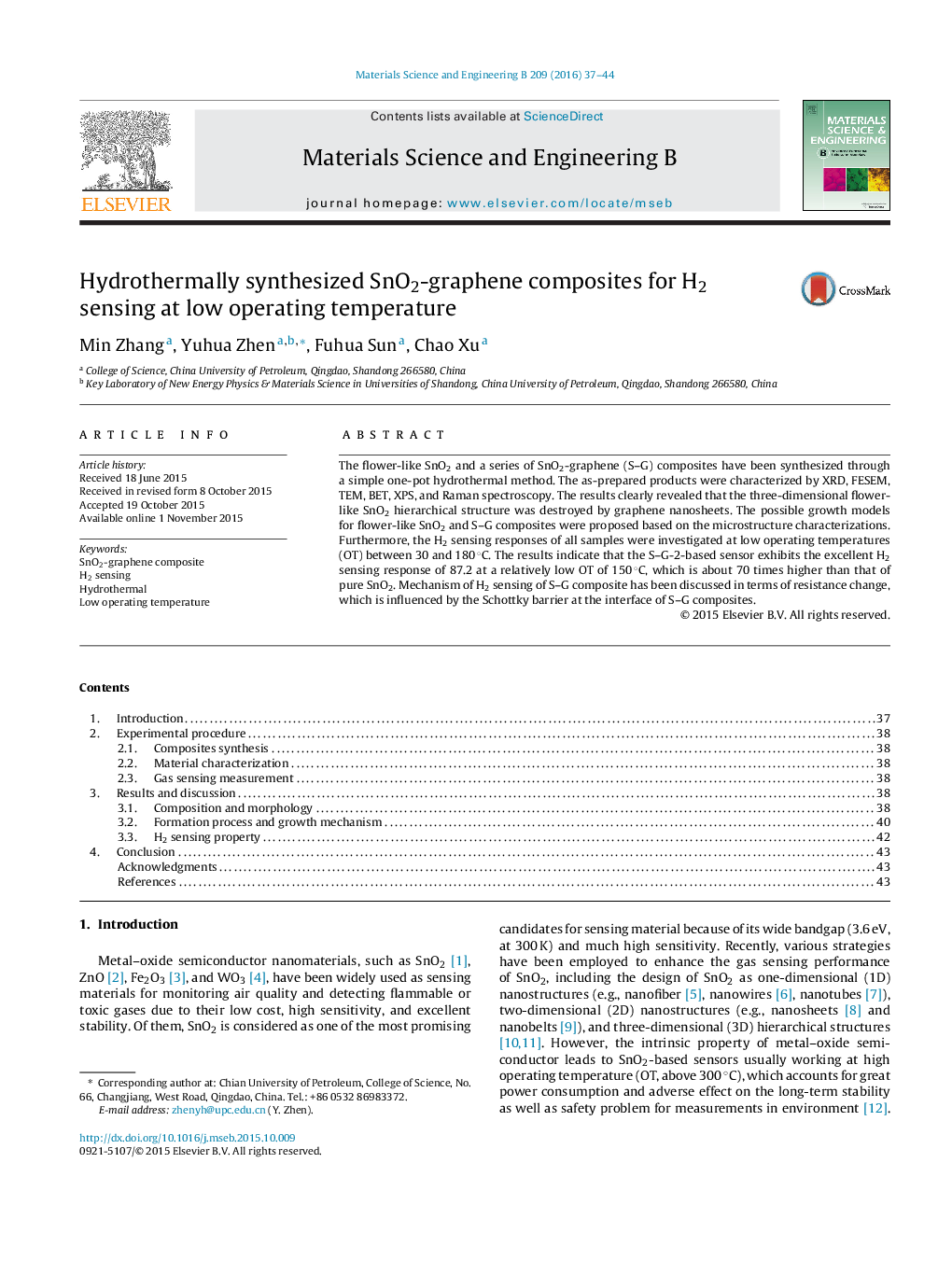| کد مقاله | کد نشریه | سال انتشار | مقاله انگلیسی | نسخه تمام متن |
|---|---|---|---|---|
| 1528385 | 1511957 | 2016 | 8 صفحه PDF | دانلود رایگان |

• SnO2-graphene (S–G) composites were synthesized by one-pot hydrothermal method.
• Compared with pure SnO2, S–G composites display much better H2 sensing performance.
• The excellent H2 sensing performance was obtained at low operating temperature of 150 °C.
• H2 sensing mechanisms of S–G composites have been discussed in view of resistance change.
The flower-like SnO2 and a series of SnO2-graphene (S–G) composites have been synthesized through a simple one-pot hydrothermal method. The as-prepared products were characterized by XRD, FESEM, TEM, BET, XPS, and Raman spectroscopy. The results clearly revealed that the three-dimensional flower-like SnO2 hierarchical structure was destroyed by graphene nanosheets. The possible growth models for flower-like SnO2 and S–G composites were proposed based on the microstructure characterizations. Furthermore, the H2 sensing responses of all samples were investigated at low operating temperatures (OT) between 30 and 180 °C. The results indicate that the S–G-2-based sensor exhibits the excellent H2 sensing response of 87.2 at a relatively low OT of 150 °C, which is about 70 times higher than that of pure SnO2. Mechanism of H2 sensing of S–G composite has been discussed in terms of resistance change, which is influenced by the Schottky barrier at the interface of S–G composites.
We synthesized the flower-like SnO2 microspheres and SnO2-graphene (S–G) composites with different GN contents through a simple one-pot hydrothermal method. The S–G composite with optimum GN contents exhibits the highest H2 sensing response of 87.2 at 150 °C, which is about 70 times higher than that of pure SnO2.Figure optionsDownload as PowerPoint slide
Journal: Materials Science and Engineering: B - Volume 209, July 2016, Pages 37–44